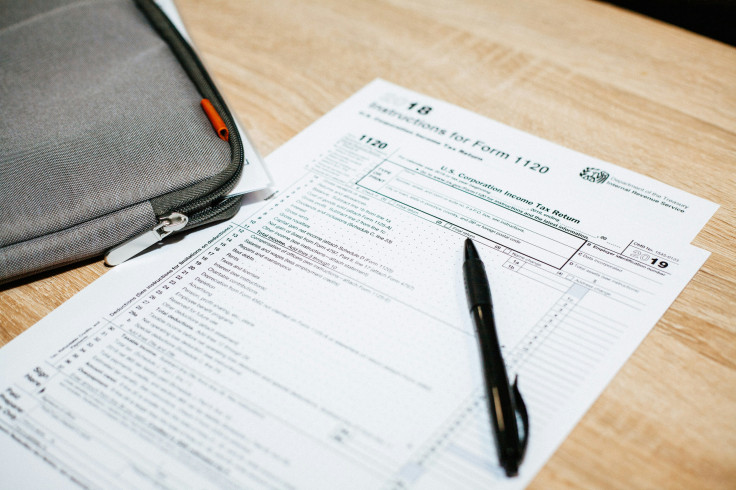
Economic turmoil in the past year has affected Americans' lives. As inflation persists, and with tax season in full swing, it is important to know what options are available for you to alleviate some or any financial burden.
One possible avenue for this is a Child Tax Credit, which provides crucial financial assistance to parents and guardians of a qualifying child.
But what does it entail? Here's a comprehensive guide on the Child Tax Credit, including income thresholds, possible refundable portions and how to claim them with the IRS.
What Is the Child Tax Credit?
The Child Tax Credit is a nonrefundable tax credit available to taxpayers with dependent children under the age of 17. The credit can reduce your tax bill on a dollar-for-dollar basis, potentially eliminating your tax bill altogether. Some taxpayers may also be eligible for a partial refund of the credit through what's called the "additional child tax credit" (ACTC).
Eligibility Criteria for the Child Tax Credit
To qualify for the Child Tax Credit, you must meet certain criteria, including being within a certain income threshold and having a qualifying child or children. Here are a few of the details.
Income Thresholds for 2024
Taxpayers must meet certain income thresholds to take full advantage of the benefits, as those with high income do not qualify for this credit. Once your modified adjusted gross income— your gross income with additional deductions— exceeds the income limit, the credit amount you get may be smaller, or you may be deemed ineligible.
For the tax year 2023 (taxes filed in 2024), the child tax credit is worth $2,000 per qualifying child if your modified income is $400,000 or below (married filing jointly) or $200,000 or below for all other filers.
If your modified adjusted gross income exceeds these income thresholds, your credit gets reduced by $50 for each $1,000 that your income exceeds it.
For the 2024 tax year (tax returns filed in 2025), the child tax credit will be worth $2,000 per qualifying child, with $1,700 being potentially refundable through the additional child tax credit.
You can check if you qualify using the Interactive Tax Assistant from the IRS website.
Qualifying Children for the Child Tax Credit in 2024
You can claim the Child Tax Credit for each qualifying child who has a Social Security number that is valid for employment in the U.S.
The IRS considers a person a "qualifying child" if they meet the following criteria:
- Be under age 17 at the end of the year
- Be your son, daughter, stepchild, eligible foster child, brother, sister, stepbrother, stepsister, half-brother, half-sister, or a descendant of one of these (for example, a grandchild, niece or nephew).
- Provide no more than half of their own financial support during the year
- Have lived with you for more than half the year
- Be properly claimed as your dependent on your tax return
- Not file a joint return with their spouse for the tax year or file it only to claim a refund of withheld income tax or estimated tax paid
- Have been a U.S. citizen, U.S. national or U.S. resident alien.
How to Claim the Child Tax Credit on Your Tax Return
You can claim the Child Tax Credit by entering your children and other dependents on Form 1040, U.S. Individual Income Tax Return, and attaching a completed Schedule 8812, Credits for Qualifying Children and Other Dependents.
These forms have to be filed by April 15, 2024 or by October 2024, if you have a tax extension.
Most qualifying tax software guides you through claiming the child tax credit with a series of interview questions, simplifying the process and even auto-filing the forms on your behalf. If your income falls below a certain threshold, you might also be able to get free tax software through the IRS' Free File.
Understanding the Refundable Portion
If you qualify for the Child Tax Credit but can't take full advantage because you don't owe taxes or owe less than your credit amount, you may be able to get a partial refund by claiming the additional child tax credit. To claim this, all of the above income and dependent criteria must be met, but there are also a few more rules:
- You must either have an earned income of at least $2,500 or have three or more qualifying dependents.
- You or your partner (if married filing jointly) cannot exclude foreign-earned income from your taxes by filing Form 2555 or Form 2555-EZ.
The IRS figures your additional Child Tax Credit amount by multiplying your earned income above $2,500 by 15%. You can claim the number of however much of the tax credit you were entitled to but couldn't fully use, whichever number is less. But keep in mind that the maximum refund you can get for the 2023 tax year is capped at $1,600 per qualifying child.
Bottom Line
As economic turmoil persists, and tax season is in full force, it is imperative to know what options are available for you to alleviate some stress.
The Child Tax Credit is a great way to do that. Whether you are paying less taxes, or getting a refundable portion, it is important to know some of the intricacies of the tax credit and whether or not you apply.
For more information, you can visit the IRS website here.
© 2025 Latin Times. All rights reserved. Do not reproduce without permission.





